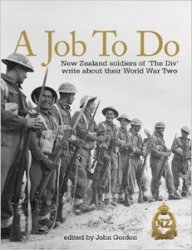In the post-World War II era, childhood became a more distinct phase of life. Whereas the economic hardships of the Great Depression forced many young people to accept adult responsibilities more quickly, postwar affluence allowed more children simply to be children. With ties to coLD war ideology, psychology, and growing consumerism, the emergence of a more defined sense of childhood converged with other notable aspects of American society during this period.
Increased attention toward childhood had much to do with the increase in live births, or the BABY boom. Whereas the birthrate had steadily declined during the difficult decades of the depression and World War II, the postwar years witnessed more women marrying at a younger age and subsequently having children. Between January and May 1946, the number of live births surged from 222,721 to 233,452, beginning a trend that saw 32 million babies born by the end of the decade. In 1954, annual births topped 4 million and did not drop below that figure until 1965, at which point four out of 10 Americans were under the age of 20.
The booming birthrate reflected vigorous economic growth in the United States during the 1950s as well as the greater educational benefits available to returning servicemen. As more individuals became college-educated through the GI Bill, they earned better incomes, which in turn led more families to have children. As they did, many men and women returned to the traditional gender roles that the war had disrupted and moved their families out of the cities and into the expanding suburbs. The suburban ideal, a country setting with modern conveniences, became a defining image of middle-class childhood and a family life that was considered an important bulwark against COMMUNISM. As social scientists proposed a link between national character and family upbringing, the American family constituted a miniature democracy that ideally schooled children in the fundamental differences between the United States and the Soviet Union.
As parents questioned how to give their offspring distinctly democratic childhoods, Dr. Benjamin Spock’s The Common Sense Book of Baby and Childcare (1946) captured the values that parenting took on during the cold war. Emphasizing common sense, Spock described parenting not as a science but as a democracy in which ordinary citizens were urged to follow their instincts. Rather than stressing rigorous training for adulthood, Spock viewed children as naturally reasonable and friendly individuals whose sensibilities should be nurtured for what they were. Rejecting warnings against maternal sentimentality, Spock asserted that parental love ultimately produced healthy and capable adults, a progressive view that caused many to fault the pediatrician for the subsequent youth rebellion of the 1960s. Striking a chord with baby boom parents, Baby and Childcare remained a best seller for several decades and became emblematic of postwar parenting.
In keeping with Spock’s approach, the baby boomers’ childhood was typically a more privileged and permissive one than their parents had experienced, characterized by smaller families, better health and nutrition, and a greater sensitivity to mass media. Children felt blessed and special, sentiments that dominated their relationships with their parents and the world around them. As postwar society took shape, children were often at the center, most conspicuously in the case of the expanding consumer culture. In the midst of widespread abundance, as well as the growth of TELEVISION, children developed a greater awareness of fad and FASHION and became a key ADVERTISING demographic. The boom in the birthrate notably corresponded with a boom in the toy industry, as imaginative play that prepared children for adulthood became a central part of their lives. Overwhelmingly, the Barbie doll and G. I. Joe action figure defined this popular approach to children’s play. Designed by Ruth Handler, the Barbie doll was launched at the International Toy Fair in 1959 and purchased by Mattel in 1964. One of the first toys marketed through television, Barbie sold 350,000 units in its first year, a success that inspired the G. I. Joe action figures released in 1964. Notably, the term “action figure” was invented for the G. I. Joe toys, as it was considered inappropriate for boys to play with dolls.
As the baby boomers came of age, the formative circumstances of their childhood uniquely combined with world events to feed the social upheaval of the 1960s. The sense of distinctiveness that marked childhood in this era caused many to believe in their ability to transform a society whose values they rejected, a view clearly apparent in the Port Huron Statement in 1962. In this way, postwar childhood critically shaped the generational conflict that emerged in the 1960s, as old and young struggled for control of the national vision in the years to come.
Further reading: Joseph E. Illick, American Childhoods (Philadelphia: University of Pennsylvania Press, 2002); Steven Mintz, Huck’s Raft: A History of American Childhood (Cambridge, Mass.: Harvard University Press, 2004).
—Hillary S. Kativa




 World History
World History









